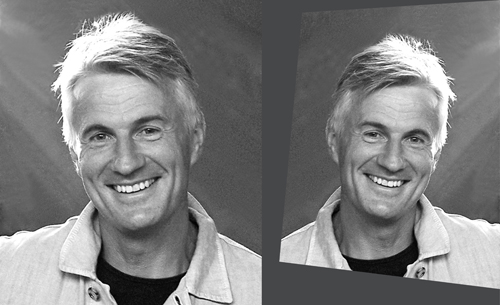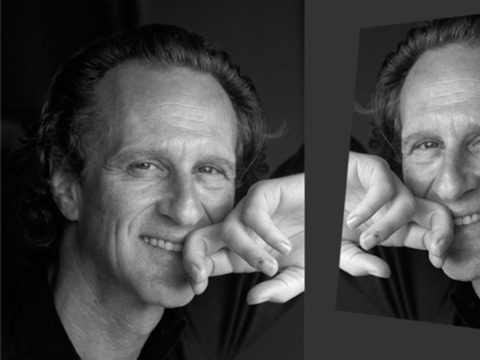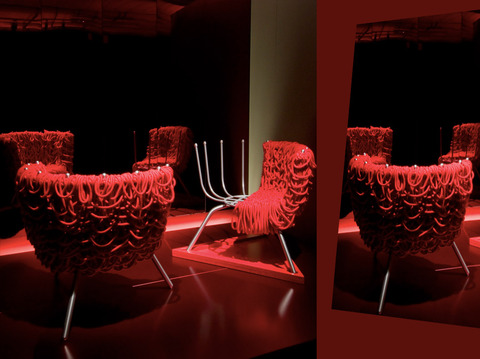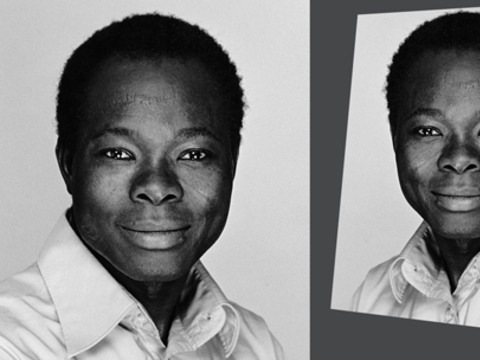Real event / Virtual event
May 08, 2012
The physically-attended event
Communication's recent development strives for a view of promoting initiatives and formats increasingly based on developing relationships and interactions for a deep engagement with the messages' recipients. As part of this trend, live events have taken on an essential role as a "device" able to render an experience spectacular, emotional and memorable, while simultaneously forming a direct, immediate relationship with the public.
The event (from "eventum", an extraordinary happening placed to break the ordinary routine of daily life) is usually distinguished by a physical place and duration in which a number of concurrent elements act to create a sequence of actions, and happenings with a cultural, ritual, celebratory value.
The selection of a space (the place), the definition of contents (the theme), the time specification (the duration), the choice of players and their actions, and the calling of the public to a physical attendance together (dialectically interacting as a whole) define the atmosphere, the unique features of the initiative and the relationships between the event's players and users. The individual's multiple senses are put into play related to seeing, hearing, speaking, acting, and (often) tasting.
In the event's spatial and relational context (through the narrative devices of cultural languages) key messages are usually conveyed. The goal is that, through the public's participation and engagement, this all leads to a memorable experience, a mixture of sensations, feelings, and cognitive rationality. Within the experiential atmosphere of every live event that has its attractions and content qualities, we can aspire to a deep, total engagement of individuals.
In addition to these events being scenes of spectacularization and direct interaction with the public in attendance, they also have the potential to serve as a medium for a larger, distant, indirect public. This public can be reached when a communication plan is implemented for them, or starting from them, targeted at the distant distribution of the contents during its announcement, unfolding of the event (i.e. in real time), comments and further discussion after the fact.
Since its inception, the XfafX cultural project looked at this two-sided value of events with depth and determination, seeking to develop an innovative, cross-media communication plan. It involved the unfolding of live events and distribution of contents through diverse media, using traditional and innovative formats at once.
XfafX's communication plan was considered instrumental to the initiative's success in terms of encouragement to participate in the initiatives of the "To Design Today" festival, organized by the Faculty of Architecture of Ferrara over the span of a full year. It was also seen as a strategic tool of communication to a much larger public, far from the events' locations and unable to attend.
One of the varied communication formats of the XfafX project including live streaming of the special lectures held within the Hall of Honor of Palazzo Tassoni Estense, given by illustrious guests invited to participate in the festival.
Thanks to the contribution of the University of Ferrara and support of the Department of Architecture (increasingly oriented to innovation, promoting cultural and research projects, and bolstering internationalization), we can now report that we have reached the goals we had set.
On the institution's site unifetv/xfafx, you can now follow live streaming of XfafX's special lectures, starting with "Wood Works" by Matteo Thun.
The virtual event
Though it is undeniable that the most important part of participating in an event is the live experience of the physical presence in a place during its happening, it is also certain that the value of the event increases considerably if it reverberates through communication channels, distributing it and making it usable by a wider community of people who may be interested in the theme.
At any rate, the meaning of a cultural event revolves around the immateriality and power of messages, contents, and narratives directed towards the public. As a result, an event's value is not "depleted" if it is projected in the virtual dimension of distance communication; in this example, in the multi-media use of live streaming.
In our opinion, through the innovative, contemporary modes of the Internet's pervasive diffusiveness, the event's value increases as it adds to the real experience (with its unique, specific features) something of a symmetrical second life, a "rebirth" within an new text, a new story. A live streaming virtual event is not a clone. It's not a "reduction of the real event; rather, it's "another event", a "restaging" of the cultural contents of the original event through a different, intelligent production befitting the digital technology medium that is broadcast through a dynamic recreation on the screen.
The spread of multi-media contents in live streaming can now happen ubiquitously. Its specific nature of conveyance and use somehow "rips" the contents from the physical space of the original production (though without negating them) to deliver them and make them able to be shared on a global level beyond the physical bounds of the real event.
Dragging the real event into digital immateriality means, ultimately, expanding the use horizon of XfafX's events beyond the small community of the University of Ferrara.
Drawing on the "long tail" theory suggested by Chris Anderson (editor of Wired, a leading information communication technology magazine), we can say that the digital format supports the distant conveyance of niche cultural contents without commercial (or, at any rate, market) interest at sustainable costs for universities (which in Italy are certainly lacking substantial resources). It lets universities reach a public of users who may be interested in the theme who would otherwise not be able to overcome situational barriers (geographic, economic, organizational) to access the contents of the real event (distant, unique, and not replicable).(1)
Live streaming requires recording the event's video and audio, which is edited (after the fact), and on the Internet can be searched for and used "on demand", including at a later point in time, as well as watched "live".
The experience of events broadcast online - classes, conferences, meetings, concerts, sports events - has already been common practice abroad for several years (to name just a few examples: MIT classes, hundreds of TED conferences, and famous product presentations of Steve Jobs' Apple). In our country, on the other hand, the experimentation and cultural offerings is still very limited, almost not off the starting blocks.
There are few significant examples in Italy that we can mention.
The live broadcast of cultural events in Italy has involved the participation of Telecom Italia (a corporate giant, holder of the technological know how for the infrastructure and supply of digital services) with institutions or events that took on the challenge and committed to reaching a larger audience of users through live streaming and the Internet beyond the (inevitably) more limited number of the "physical audience". This was done with the conferences of scientists put on as part of the many events of the Festival of Science in Genoa, and by the MAXXI projecting Rome (maxxinweb) where conversations and presentations of works of architects, designers, artists, and curators were presented in real time. There was also the initiative by the Accademia Nazionale di S. Cecilia in Rome that involved the live streaming of four concerts by the maestro Antonio Pappano (pappanoinweb), which still can be accessed on demand. (2)
Contemporary society is increasingly connected and interconnected by the Internet. This is not just true for younger generations (or the digital natives who seem to live on the web these days). It applies to people who, as a whole, beyond generational differences, spend a great deal of their time in front the screens of computers, devices, smart phones, as ever more messages, content, and narratives are layered on the web.
The Internet's horizon has become a world full of information, options for entertainment and education. The Italian university system can no longer "snub" this capitalizing on and sharing of digital knowledge. On it and through it, contents, ideas, plans and visions are quickly spread (as today's global society demands). The Internet can no longer be done without for developing cultural projects and innovative research, as well as educational projects directly mainly to new generations.
We see the infrastructural costs of digital communication for spreading contents as sustainable for universities too. As our own project XfafX is demonstrating, being able to make the academic world autonomous from private publishing groups and commercial communication in favor of institutional communication is re-evaluating the original meaning of the Internet given by its inventor Tim Berners Lee.
It is time to start thinking seriously about digital technology to put at the service of universities and spreading high culture, rather than just the popular or commercial culture that is currently dominant on the Internet.
Academic institutions have the chance (taking advantage of being one of the main creators of contents and knowledge) to let a larger public beyond the university communities know of its tradition and reputation, research, activities, and cultural projects.
In this spirit, we approached the "To Design Today" festival in the celebration of the 20th anniversary of the Faculty of Architecture of Ferrara's founding, reaching the goal of live streaming XfafX's special lectures. This is one step, not the last, on of our cultural and communication path that aims to seek innovation within universities.
Alfonso Acocella
XfafX Author and Scientific Head
Note
1 Chris Anderson, La coda lunga. Da un mercato di massa a una massa di mercati, Torino, Codice Edizioni,2007 (english The Long Tale, 2006), pp.233
2 http://pappanoinweb.telecomitalia.com/racconti
back to top print
Post-it
ISSN 2239-6063
edited by
Alfonso Acocella
redazione materialdesign@unife.it


